Industry Talks
GORE/KAOS in the Industry: Some Lessons Learnt,
Robert Darimont (Respect-IT, Belgium)
 Abstract: Goal-oriented Requirements Engineering (GORE) and in particular KAOS is acknowledged as one of the most prominent approaches to RE at the scientific level. The talk will shortly review the KAOS approach focusing on its main assets (goals, responsibilities, risks) and will focus on the process followed (1) to build a consistent, realistic and as complete as possible requirements model, (2) to validate it with stakeholders, and (3) to generate requirements documents based on it. The talk will report on industrial/commercial projects that have been undertaken always successfully with the KAOS approach for more than 15 years. Benefits, drawbacks, limitations, challenges and perspectives shall be investigated as a conclusion.
Abstract: Goal-oriented Requirements Engineering (GORE) and in particular KAOS is acknowledged as one of the most prominent approaches to RE at the scientific level. The talk will shortly review the KAOS approach focusing on its main assets (goals, responsibilities, risks) and will focus on the process followed (1) to build a consistent, realistic and as complete as possible requirements model, (2) to validate it with stakeholders, and (3) to generate requirements documents based on it. The talk will report on industrial/commercial projects that have been undertaken always successfully with the KAOS approach for more than 15 years. Benefits, drawbacks, limitations, challenges and perspectives shall be investigated as a conclusion.
Robert Darimont is the CEO of the Belgian company Respect-IT, a spin-out of the University of Louvain (Belgium) dedicated to Requirements Engineering. He has been leading Requirements Engineering projects in the industry and in public administrations for more than 15 years and has managed the development of the Objectiver tool. He trains companies on the use of KAOS and coaches requirements engineers in the adoption of RE techniques. Robert Darimont received a PhD in Software Engineering from the University of Louvain (with Prof. van Lamsweerde). His thesis was about the use of formal refinement patterns in KAOS.
Parametric Requirements in a Perspective of Performance and Costs for Mechanical Systems,
Gauthier Fanmuy and Fabrice Pinot (Dassault Systemes, France)
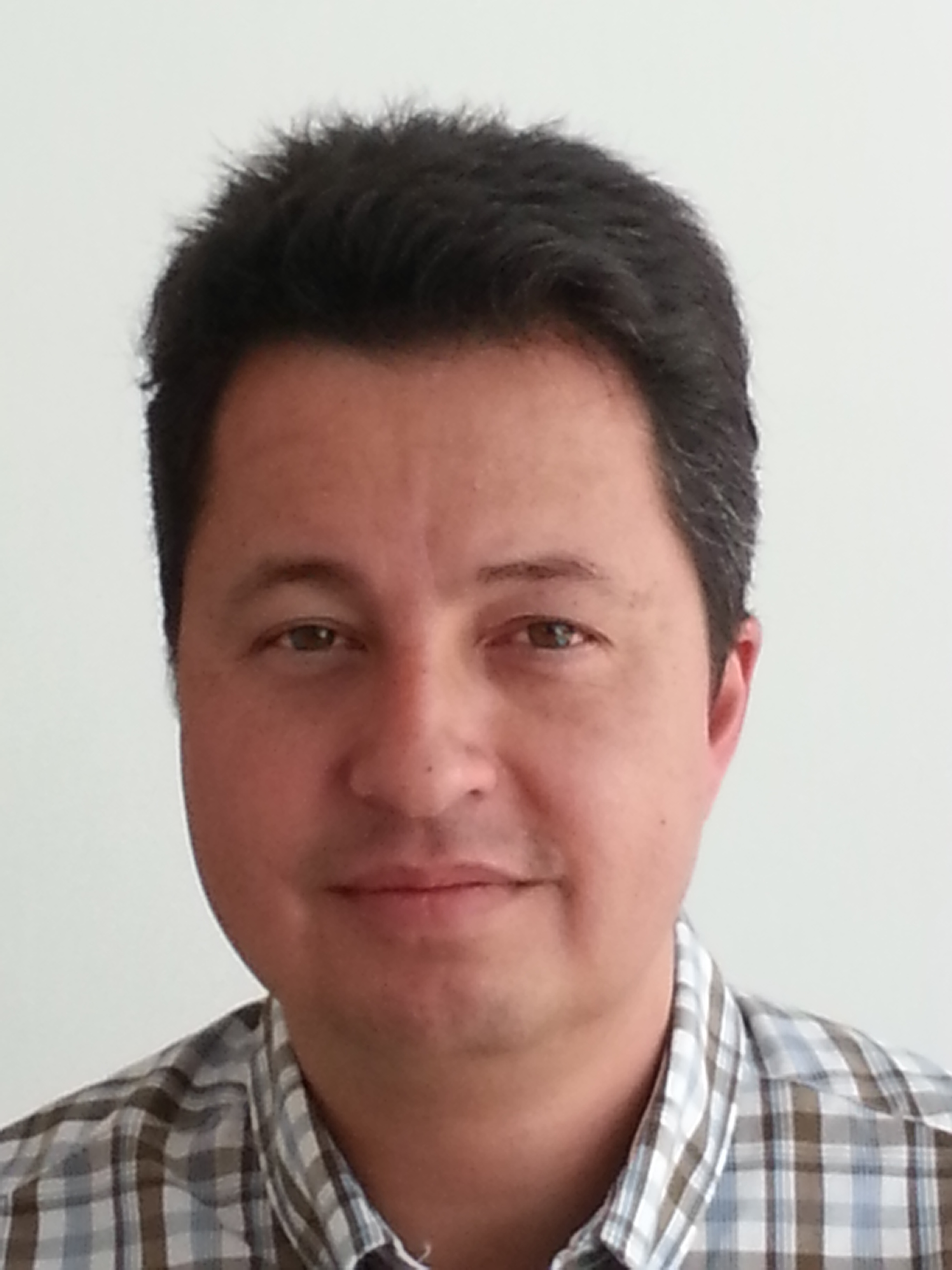 Abstract: Complexity is a fatality and must be mastered: it is the product of today’s world evolution as the environment becomes more and more “intelligent”, systems are more and cooperating and regulation increases. The presentation is related to the design and the optimization of a mechanical system: transition of a set of requirements to parameters and global cost-technical optimization in a constrained environment.
Abstract: Complexity is a fatality and must be mastered: it is the product of today’s world evolution as the environment becomes more and more “intelligent”, systems are more and cooperating and regulation increases. The presentation is related to the design and the optimization of a mechanical system: transition of a set of requirements to parameters and global cost-technical optimization in a constrained environment.
Gauthier Fanmuy graduated as a Systems Engineer from École Centrale de Marseille (ECM) in 1989. He joined Dassault Aviation in 1990 where he managed several projects of electro-optics sensors integration and development of complex system functions. He joined PSA Peugeot Citroën in 2002 where he was in charge of deploying Systems Engineering in a Vehicle Design Division. In 2007 he worked in a consulting company ADN where he created and developed a department on Systems Engineering consultancy and tools reselling. In 2013 he joined Dassault Systemes as a Systems Experience Director where he is in charge of a portfolio of products for Requirements Engineering and Architectural Design. He is Deputy Technical Director of AFIS (French Association on Systems Engineering) and represents Dassault Systemes in AFIS and INCOSE (International Council on Systems Engineering).
 Fabrice Pinot graduated as a Civil Engineer in 1990 from École Nationale Supérieure d’Arts et Métiers (ENSAM). He joined Dassault Systemes in 1991 for customer support and industrialization on CATIA mechanical and was involved in many customer deployments. He was team manager for CATIA Mechanical Industrialization for 3 years. He became an expert for CATIA mechanical solution at CATIA marketing in 2004 and has been Senior Product Marketing Manager for the Mechatronics Engineering Platform since 2008.
Fabrice Pinot graduated as a Civil Engineer in 1990 from École Nationale Supérieure d’Arts et Métiers (ENSAM). He joined Dassault Systemes in 1991 for customer support and industrialization on CATIA mechanical and was involved in many customer deployments. He was team manager for CATIA Mechanical Industrialization for 3 years. He became an expert for CATIA mechanical solution at CATIA marketing in 2004 and has been Senior Product Marketing Manager for the Mechatronics Engineering Platform since 2008.
The ‘beA’-Project – Requirements Engineering with more than 500.000 Stakeholders,
Oliver Hehlert and Kim Lauenroth (adesso AG, Germany)
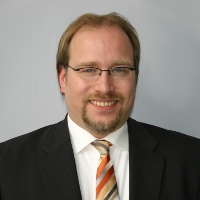 Abstract:The German legal system is approaching a turning point: In 2016, the German Federal Bar Association will introduce an electronic communication system between lawyers and the courts in Germany. From 2022, this system will replace the letter post as the only legal communication option between lawyers and the courts.
Abstract:The German legal system is approaching a turning point: In 2016, the German Federal Bar Association will introduce an electronic communication system between lawyers and the courts in Germany. From 2022, this system will replace the letter post as the only legal communication option between lawyers and the courts.
beA stands for „besonderes elektronisches Anwaltspostfach“ which means special electronic mailbox for lawyers. At first glance this sounds like a better email system, but on closer inspection it turns out that this system will radically change the whole legal profession in Germany. Many representatives of the bar name it a new era for the judiciary. At the latest from 2022, advocacy and justice must communicate electronically with each other.
Since April 2013 adesso supports the Federal Bar Association with requirements engineering for the beA. In addition to the outlined political dimension the project has a very concrete dimension: There are over 160.000 accredited lawyers in Germany, which will use the system. In addition there is the office staff (about 2 persons per lawyer) and the many representatives of the justice (ministries of justice in 16 states and approximately 1.000 courts). In total, there are more than 500.000 stakeholders who can provide requirements.
This talk gives an overview of the project and describes the applied methodologies and procedures to deal with such a mass of stakeholders.
Oliver Hehlert is Senior Consultant at adesso AG. He worked 10 years for an insurance company before joining the adesso AG in 2012. He focuses on consulting, project management, and requirements engineering. He is currently project manager for the beA-project at the Federal Bar Association in Berlin and accompanies the development and introduction of the special electronic mailbox for lawyers. He studied business informatics at the University of Applied Science Dortmund.
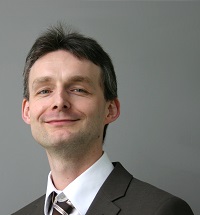 Dr. Kim Lauenroth is Chief Requirements Engineer and leads a competence centre for requirements engineering at adesso AG. He has over 10 years of experience in software and requirements engineering in different domains. Kim received his PhD in the field of requirements engineering from the University of Duisburg-Essen and studied computer science, business administration, and psychology at the University of Dortmund
Dr. Kim Lauenroth is Chief Requirements Engineer and leads a competence centre for requirements engineering at adesso AG. He has over 10 years of experience in software and requirements engineering in different domains. Kim received his PhD in the field of requirements engineering from the University of Duisburg-Essen and studied computer science, business administration, and psychology at the University of Dortmund
Understanding and Tracing Design Rationale by Traceability Controlling,
Horst Kargl (Sparx Systems, Austria)
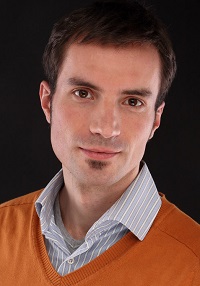 Abstract: Modeling tools allow to simply create relations between analysis (requirement), design and implementation models of graphical modeling languages like UML, SysML, etc. Specific views like the relationship matrix provide a simple overview of the relations and allow a simple impact analysis. However, the design rationale and intention the user had in mind during creating a relation between connected elements is missing.
Abstract: Modeling tools allow to simply create relations between analysis (requirement), design and implementation models of graphical modeling languages like UML, SysML, etc. Specific views like the relationship matrix provide a simple overview of the relations and allow a simple impact analysis. However, the design rationale and intention the user had in mind during creating a relation between connected elements is missing.
TraCo provides a framework supporting all stakeholders during creation, interpretation and maintaining the model. We enhance the established relationship matrix to make it possible for requirements engineers and software architects to annotate links with the engineers’ informal knowledge in that matrix, based on a context and a relevance value between one and nine. A calculation framework aggregates this information and provides additional matrices with metrics, based on the provided informal knowledge. The calculated metrics allows to indicate the most important design elements and whether all stakeholder have the same idea about the system which is created.
Dr. Horst Kargl works at Sparx Systems central Europe as trainer and consultant. He teaches mainly UML, SysML and BPMN and supports companies in the introduction of modeling approaches. Before he joined Sparx Systems in 2008, he was a research assistant at the Vienna University of Technology where he worked on different research projects and received his PhD in business informatics. When he is not at the customer site, he is still involved in research projects and supports the company LieberLieber in their development of MDE tools.
Using Behaviour Models for the Specification of Software based automotive Systems – Challenges and practical Experiences,
Henning Kleinwechter and Andreas Leicher (Carmeq GmbH, Germany)
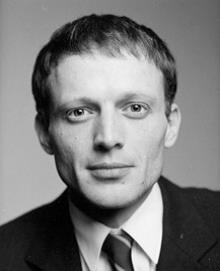 Abstract: In automotive industry embedded software is usually implemented by hardware suppliers based on textual requirements. With increasing complexity and a tendency to locate functionalities on single control units, that are used in a variety of vehicle variants, the amount of requirements and its variants is steadily increasing. Moreover care has to be taken to manage the correct interplay of specified functionalities for usage with different control units in varying vehicle configurations. In order to cope with these challenges, we present different approaches using behavior models in addition to textual requirements to more precisely specify functional requirements. One of the major benefits of using models is the possibility to validate the specification in early stages of the development cycle by using simulation techniques.
Abstract: In automotive industry embedded software is usually implemented by hardware suppliers based on textual requirements. With increasing complexity and a tendency to locate functionalities on single control units, that are used in a variety of vehicle variants, the amount of requirements and its variants is steadily increasing. Moreover care has to be taken to manage the correct interplay of specified functionalities for usage with different control units in varying vehicle configurations. In order to cope with these challenges, we present different approaches using behavior models in addition to textual requirements to more precisely specify functional requirements. One of the major benefits of using models is the possibility to validate the specification in early stages of the development cycle by using simulation techniques.
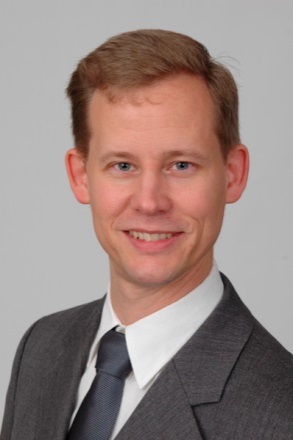 On the other hand, models cannot substitute textual requirements completely and care has to be taken to either avoid redundancies or to ensure consistency among textual requirements and models. This has also to be taken into account for the management of variants. For this, we present approaches to extend the feature-based variant management techniques used for our textual requirements to behavior models.
On the other hand, models cannot substitute textual requirements completely and care has to be taken to either avoid redundancies or to ensure consistency among textual requirements and models. This has also to be taken into account for the management of variants. For this, we present approaches to extend the feature-based variant management techniques used for our textual requirements to behavior models.
At the Coalface: Experiences of Requirements Engineering in Industry?,
Alistair Mavin (Mav) (Rolls-Royce, UK)
 Abstract: Most requirements engineering text books and documented processes tend to imply that everything is within the requirements engineer’s control. Yet practical considerations like geography, schedule, resources and stakeholder engagement are either not mentioned or are assumed to be easy. In many ways, the practice of requirements engineering is far removed from the theory. Schedules are often tight and fixed, yet requirements have to be elicited, written, reviewed and maintained. This requires both aptitude and attitude, both of which may be limited. Stakeholders may not know what they really want, or may not even consider themselves to be stakeholders of the system being developed. Development is rarely done in a green-field site, but usually in the mire of brownfields. In such environments, even agreeing the system scope can be a significant challenge. In this presentation, Mav will discuss the reality of undertaking requirements work in industry, with all the constraints and pressures that can make “doing it by the book” all but impossible. He will draw on his experiences within Rolls-Royce and from his previous role as a requirements engineering consultant.
Abstract: Most requirements engineering text books and documented processes tend to imply that everything is within the requirements engineer’s control. Yet practical considerations like geography, schedule, resources and stakeholder engagement are either not mentioned or are assumed to be easy. In many ways, the practice of requirements engineering is far removed from the theory. Schedules are often tight and fixed, yet requirements have to be elicited, written, reviewed and maintained. This requires both aptitude and attitude, both of which may be limited. Stakeholders may not know what they really want, or may not even consider themselves to be stakeholders of the system being developed. Development is rarely done in a green-field site, but usually in the mire of brownfields. In such environments, even agreeing the system scope can be a significant challenge. In this presentation, Mav will discuss the reality of undertaking requirements work in industry, with all the constraints and pressures that can make “doing it by the book” all but impossible. He will draw on his experiences within Rolls-Royce and from his previous role as a requirements engineering consultant.
Alistair Mavin (Mav) is a requirements specialist at Rolls-Royce. Prior to joining Rolls-Royce he was a requirements engineer at Praxis Critical Systems and within the Centre for Human Computer Interaction Design at City University in London. He has carried out systems and requirements engineering projects in a range of industries including aerospace, defence, rail and automotive. He has experience in the development and delivery of requirements engineering training. Mav has published many papers on systems and requirements engineering and is the lead author of the Easy Approach to Requirements Syntax (EARS) notation. He is a chartered engineer and a committee member of the British Computer Society’s Requirements Engineering Specialist Group. He is a member of the IEEE “RE” conference series Industry Committee and was Industry Chair for RE13.
Startup of a Requirements Engineering Process in the Medtech Environment: Risks, Opportunities and Side Effects,
Lukas Müller (Tecan, Switzerland)
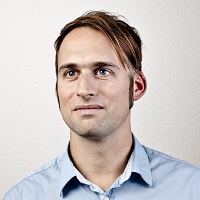 Abstract: Tecan is a global provider of laboratory instruments and solutions in the Medtech industry. The company has recently introduced Requirements Engineering as a new discipline in their organizational structure. We will review the startup of a Requirements Engineering process in a regulated environment and discuss achievements as well as challenges. Alongside a deep dive into our process methodology, we will provide insights on risks that can be mitigated and what the side effects of Requirements Engineering at Tecan are. Finally, we will have a look at the next steps on Tecan’s Requirements Engineering roadmap.
Abstract: Tecan is a global provider of laboratory instruments and solutions in the Medtech industry. The company has recently introduced Requirements Engineering as a new discipline in their organizational structure. We will review the startup of a Requirements Engineering process in a regulated environment and discuss achievements as well as challenges. Alongside a deep dive into our process methodology, we will provide insights on risks that can be mitigated and what the side effects of Requirements Engineering at Tecan are. Finally, we will have a look at the next steps on Tecan’s Requirements Engineering roadmap.
Dr. Lukas Müller is team leader Requirements Engineering at Tecan AG in Männedorf, Switzerland. Before joining Tecan in 2011, he held positions as a project manager or requirements engineer at Blankpage AG in Schlieren, Switzerland, MMI AG in Glattbrugg, Switzerland, and in an EU project on Computational Biology in Lisbon, Portugal. He received a diploma degree in Biochemistry from ETH Zurich in 2003, a MSc in Bioinformatics from the University of Lausanne, and a Dr. sc. in Computational Biology from ETH Zurich in 2009.
Agility and Documentation – A Perfect Fit!,
André Pflüger and Chris Rupp (SOPHIST GmbH, Germany)
 Abstract: Many companies want to use the hype about agile process models for their own development projects to improve efficiency and effectiveness. Agility, however, is not a guarantee for success. The biggest obstacle lies not in understanding the agile principles or the various procedures, but in applying them correctly in a given situation. In particular the process of requirements documentation as a discipline of requirements management, which is not without controversy, is subject to this revolution.
Abstract: Many companies want to use the hype about agile process models for their own development projects to improve efficiency and effectiveness. Agility, however, is not a guarantee for success. The biggest obstacle lies not in understanding the agile principles or the various procedures, but in applying them correctly in a given situation. In particular the process of requirements documentation as a discipline of requirements management, which is not without controversy, is subject to this revolution.
Contrary to many claims, agile procedures do not relieve developers from documenting information during system development. Only the way in which this process is integrated into the organization has to be adapted to the different mindset of the people involved. An extensive phase for specifying the product as it can be found in classic process models is omitted. In fact, the necessary artifacts for preserving knowledge about the system and distributing information throughout the project are created in parallel with project work.
This is exactly the point where the biggest problem lies. On the basis of the respective project conditions, an appropriate way to create the documentation has to be found. These factors have an influence on the necessary types of information and on the extent to which they have to be documented. However, the project conditions are not only significant for the content types and their scope, but also determine the choice of a suitable notation.
The lecture shows points in favor of documenting information despite working with an agile process model. It describes typical problems from development projects, elaborates their causes on the basis of theories from cognitive science, and creates a link to documentation work. These points are complemented with a generic process for determining the amount and designing a concept for documentation that is adapted to the project conditions. The process is evaluated in a scenario, and the evaluation result for the contents and their scope is presented.
André Pflüger – I am part of the SOPHIST family since 2009. As a system engineer, I support our customers from requirements analysis to system design to software design. For this purpose, I use both textual and model based documentation techniques and apply object-oriented methods for analyzing and designing systems. As a trainer I introduce our customers to requirements engineering. Furthermore I prepare them for the CPRE foundation level exam. After completing my computer science degree, I delved into the validation of system architectures based on the UML to write my doctoral dissertation. In my spare time I love to be with people, to do some sports, to read a book or to hear music. I am also interested in model-driven software development, which I apply in several projects using Java EE technology.
 Chris Rupp is the Head of SOPHIST GmbH (officially: founder and CEO), chief consultant, coach and trainer. After 20 years of active involvement in the field of systems engineering she has gathered: … a company … 6 books … 40 employees … innumerable articles and lectures … and a lot of experience. She lives a passion for consulting. As a private person, the following three areas of interest fascinate her: Arts, esp. photography and painting (www.chrisrupp.net) People: I love to have a chat with friends or do something together. Sports: jogging, snowboarding and kiteboarding.
Chris Rupp is the Head of SOPHIST GmbH (officially: founder and CEO), chief consultant, coach and trainer. After 20 years of active involvement in the field of systems engineering she has gathered: … a company … 6 books … 40 employees … innumerable articles and lectures … and a lot of experience. She lives a passion for consulting. As a private person, the following three areas of interest fascinate her: Arts, esp. photography and painting (www.chrisrupp.net) People: I love to have a chat with friends or do something together. Sports: jogging, snowboarding and kiteboarding.
A Lightweight Requirements Engineering Assessment Guide,
Peter Spörri and Daniel Rapp (Zühlke Management Consultants, Switzerland)
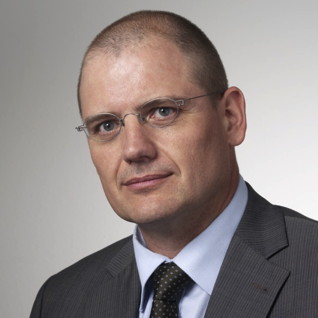 Abstract: Within this talk we show the motivation for Zühlke to develop a Requirements Engineering Assessment Guide in close cooperation with the University of Zürich by focussing on the challenges our clients face and the current market conditions in the Process- and Management Consulting Domain. Especially by introducing the RE Assessment Guide we will give insight how the RE Assessment supports our consulting projects and how it brings added value to our customers. Furthermore we will give an outlook on the further plans to enhance and extend the RE Assessment Guide.
Abstract: Within this talk we show the motivation for Zühlke to develop a Requirements Engineering Assessment Guide in close cooperation with the University of Zürich by focussing on the challenges our clients face and the current market conditions in the Process- and Management Consulting Domain. Especially by introducing the RE Assessment Guide we will give insight how the RE Assessment supports our consulting projects and how it brings added value to our customers. Furthermore we will give an outlook on the further plans to enhance and extend the RE Assessment Guide.
This talk addresses companies with a focus on software or product development, which want to analyse and optimise their RE processes as well as consulting companies, which may be interested in conduction assessments themselves. In addition the Requirements Engineering Assessment Guide may also be interesting for audiences with a scientific background who are interested in developing and further evolving RE methodologies.
Peter Spörri manages a Business Unit at Zühlke Management Consultants AG. The unit supports clients and projects in Business Process Management, Business Analysis and Requirements Engineering. Peter Spörri acted as the industry partner in the development of the RE Assessment Guide. He is mainly engaged in the management of projects and business units where he focuses on initiations our turn-arounds.
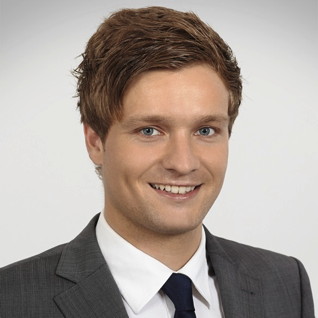 Daniel Rapp works as Business Analyst at Zühlke Management Consultants AG. During his master’s studies in business informatics at the University of Zürich Daniel Rapp has developed and applied the Requirements Engineering Assessment Guide in collaboration with Zühlke Management Consultants AG and Fraunhofer IESE. Besides conducting assessments and further developing the Assessment Guide, Daniel Rapp is mainly engaged in Requirements Engineering and Project Management in software development projects.
Daniel Rapp works as Business Analyst at Zühlke Management Consultants AG. During his master’s studies in business informatics at the University of Zürich Daniel Rapp has developed and applied the Requirements Engineering Assessment Guide in collaboration with Zühlke Management Consultants AG and Fraunhofer IESE. Besides conducting assessments and further developing the Assessment Guide, Daniel Rapp is mainly engaged in Requirements Engineering and Project Management in software development projects.
Requirements Traceability with an Eclipse-based Tool Chain,
Jens Trompeter and Ömer Gürsoy (itemis AG)
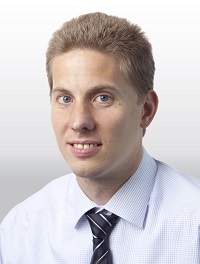 Abstract: The importance of Traceability is often underestimated. It’s frequently all about the formal compliance with predetermined standards and norms, i.e. Traceability is limited to simple solutions such as a Trace-Matrix. However, standards such as ISO 26262 require Traceability for good reason. When properly placed conceptually and implemented with the appropriate tools, Traceability supports many important tasks in daily project work, e.g. effort estimates, change management and quality assurance.
Abstract: The importance of Traceability is often underestimated. It’s frequently all about the formal compliance with predetermined standards and norms, i.e. Traceability is limited to simple solutions such as a Trace-Matrix. However, standards such as ISO 26262 require Traceability for good reason. When properly placed conceptually and implemented with the appropriate tools, Traceability supports many important tasks in daily project work, e.g. effort estimates, change management and quality assurance.
This presentation explains the necessary concepts, covers typical challenges and shows a practical implementation of Traceability with the Eclipse-based tool YAKINDU Traceability. Thereby we place particular emphasis on illustrating how Traceability, through the various stages of the development process – from the requirements to code – can be achieved across different tools, so that the needs of all stakeholders are met.
The tool YAKINDU Traceability emerged from the research project VERDE , in which itemis engaged itself with a universal tool platform for the verification and validation oriented development of embedded systems. The Eclipse-based solution allows you to integrate existing tools, e.g. modeling tools, test tools and ALM-software such as PTC Integrity, and accomplish multi-tool Traceability. In addition, YAKINDU Traceability supports the international ReqIF-standard of the OMG.
A well-designed Traceability bridges the gap between different stakeholders and disciplines. In this way the client can exactly keep track of how their technical requirements are implemented concerning system requirements, technical design and implementation. The quality manager can evaluate whether there are sufficient test cases for the requirements of the client and the project manager can analyze what impact it has when requirements change. The communication between the stakeholders is improved and it will make risks, dependencies and misunderstandings transparent.
Outline of the presentation:
- Genuine reasons for Traceability
- Typical challenges
- Necessary concepts
- Technical implementation with YAKINDU
Jens Trompeter holds a degree in Business Administration and is a member of the board for itemis AG. As a certified Scrum Product Owner and IREB Certified Professional, he has been involved in IT projects in various national and international customer environments for many years. Most recently, he has established the Scrum process and agile requirements engineering methods in a large enterprise project. In addition, he takes responsibility as a product manager for the development of YAKINDU Requirements – a tool for use-case centered requirements specification.
 Ömer Gürsoy holds a degree in Computer Science and works as a Software Engineer for itemis. As an Analyst, Developer and Architect he gathers extensive experience in the domains of embedded and enterprise systems. His special interests are in model-driven software development and architectures. As an expert in modeling, domain-specific languages and integrated development tools, he is responsible for the product development of YAKINDU Traceability at itemis AG.
Ömer Gürsoy holds a degree in Computer Science and works as a Software Engineer for itemis. As an Analyst, Developer and Architect he gathers extensive experience in the domains of embedded and enterprise systems. His special interests are in model-driven software development and architectures. As an expert in modeling, domain-specific languages and integrated development tools, he is responsible for the product development of YAKINDU Traceability at itemis AG.
Business Requirements as the Basis for Enterprise Architecture and Project Architectures,
Harmen van den Berg (BiZZdesign – The Netherlands)
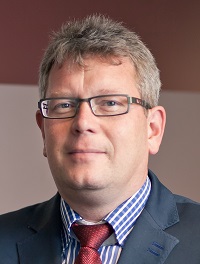 Abstract: Demands and wishes from managers, users and other stakeholders, or in other words the business requirements, are the basis for any organizational change project. The quality of the enterprise architecture, the project architectures, and the IT systems developed based on these architectures, is largely determined by the way the business requirements are fulfilled.
Abstract: Demands and wishes from managers, users and other stakeholders, or in other words the business requirements, are the basis for any organizational change project. The quality of the enterprise architecture, the project architectures, and the IT systems developed based on these architectures, is largely determined by the way the business requirements are fulfilled.
Also within TOGAF9 requirements are important. This requires a systematic approach for requirements analysis and management; especially for the business requirements that determine the contents of the enterprise architecture, and not only for the detailed IT requirements. In this presentation we will present our approach for business requirements management, and show how this can be modeled and analyzed using the ArchiMate language and supporting tool.
Dr. Harmen van den Berg is a partner and co-founder of BiZZdesign. BiZZdesign offers complete and integrated solutions (tools, methods, consultancy and training) to design and improve organizations, from enterprise architecture to process management.
Harmen van den Berg studied mathematics at the Utrecht University, and did his PhD at Twente University. He was an assistent professor at Twente University, and scientific researcher at Telematica Instituut. At BiZZdesign, Harmen developed methods and techniques for business process engineering and enterprise architecture, and applied these as consultant at various organizations. Harmen is now responsible for Enterprise Architecture and training development. He has authored several publications on EA and BPM, and is chair of the Dutch ArchiMate Usage working group. He is ArchiMate-certified, and trainer of ArchiMate courses. Harmen is a speaker at many EA-conferences, like LAC, EAC, EAM, and The Open Group.

